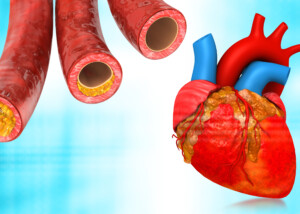
What does it mean when you have premature ventricular contractions (PVC’s) but also a zero calcium score and normal heart structure?
Can the presence of the PVC’s still be indicative of something bad?
I asked this question to cardiologist David N. Smith, MD, a board certified cardiologist with Premier Cardiovascular Care and Wellness in SC.
Dr. Smith explains as follows, “The risk from PVC’s are related to risk of a heart rhythm abnormality that makes it difficult for blood flow and, in certain families, elevates the risk that the electrical system of the heart will become chaotic.”
In other words, the presence of PVC’s, whether you have a zero calcium score or not, becomes relevant if you already have a heart rhythm abnormality or are at risk for an arrhythmia.
This is not related to blockages in the coronary arteries, which is what the calcium score test looks for (hardened or calcified plaque deposits).
Dr. Smith continues, “This risk is different than the risk portended by a calcium score, which indicates risk of blocked arteries leading to heart attacks. In this light, the two are unrelated.
“The calcium score that is very high, however, may reflect ongoing atherosclerotic disease that secondarily lead to electrical system abnormalities manifested as PVC’s.”
Calcium Scoring
Calcium scoring is a diagnostic test performed using a CT scanner to evaluate the amount of calcium in the coronary arteries, which can indicate the presence of hard, stable plaque.
The procedure is quick, typically taking about 15 minutes.
During the test, you lie still on a table while the CT scanner captures detailed images of your heart’s arteries.
These images help assess the extent of calcium buildup, which can be a marker for coronary artery disease.
However, it’s important to note that calcium scoring only detects hard, stable plaque and does not reveal soft or unstable plaque, which can also contribute to cardiovascular risk.
This test is useful for assessing coronary heart disease risk and guiding further evaluation or treatment.
Ironically, some people, the idea of lying inside a scanner (especially one that emits radiation) that looks inside the heart’s arteries can be enough to induce premature ventricular contractions on the spot from anxiety alone.
You can ask the technician if they have any anxiety-relieving objects you can hold onto during the procedure.

Dr. Smith is a published author, national lecturer and Yale-trained physician-scientist certified by the American Board of Internal Medicine in Cardiovascular Disease. From his basic science background combined with advanced clinical research training at the Columbia Mailman School of Public Health, he brings an integrated holistic approach to cardiovascular medicine.
 Lorra Garrick has been covering medical, fitness and cybersecurity topics for many years, having written thousands of articles for print magazines and websites, including as a ghostwriter. She’s also a former ACE-certified personal trainer.
Lorra Garrick has been covering medical, fitness and cybersecurity topics for many years, having written thousands of articles for print magazines and websites, including as a ghostwriter. She’s also a former ACE-certified personal trainer.
.









































